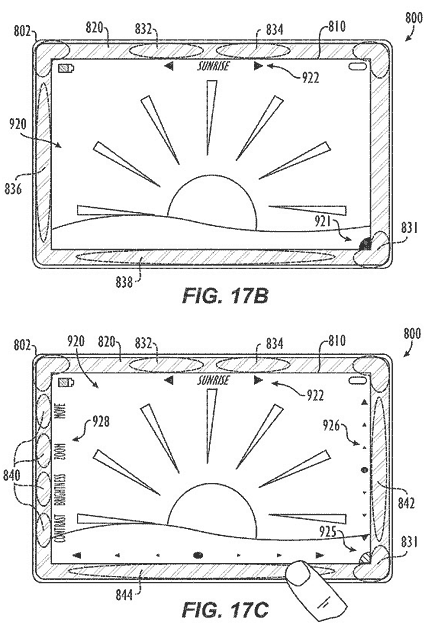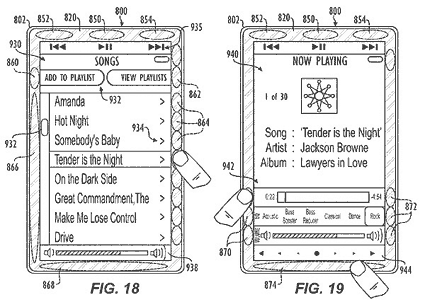Apple Files Patent For Touch Screen iPod “Chameleon”
A new US patent application reveals Apple’s plans for a new touch screen iPod. The filing describes the next-generation touch-screen iPod that will be able to transform itself from being a music player to PDA to photo album and a cellular phone. This filing is the most comprehensive to date, intertwining several previous filings in describing iPod-like devices with touch sensitive bezels, displays and sensors for determining orientation.

The filing, made June 23, 2006 and published for the first time Thursday by the United States Patent and Trademark Office, is appropriately titled: “Electronic Device Having Display and Surrounding Touch Sensitive Bezel for User Interface and Control.” Apple also filed two other continuation patents titled Method and apparatus for configuring a computer and Presenting compatible components and system conditions for computer devices. A related patent was additionally filed under Method and apparatus for providing compatible components for purchase.
Apple described the new iPod device in great detail. The electronic device, which can be a digital media player, picture frame, personal digital assistant, cell phone or handheld gaming unit, designates areas of the device’s housing bezel as the primary user interface controls used for operation.
In one example of such a device, visual guides corresponding to the controls are displayed on the display adjacent the areas of the bezel designated for the controls. Touch data would be generated by the bezel when a user touches specific areas of the device’s enclosure, Apple said. The device would then determine which of the controls has been selected based on which designated area is associated with the touch data from the bezel.
Apple explained that the device can have a sensor for determining the orientation of the device, i.e., whether a user is holding it horizontally or vertically. “Based on the orientation, the device can alter the areas designated on the bezel for the controls and can alter the location of the visual guides for the display so that they match the altered areas on the bezel,” the company said.

The electronic devices described in the filing “may be multi-functional hand-held devices” with a user interface that requires “no physical buttons, keys, or switches so that the display size of the electronic devices can be substantially increased.” Preferably, Apple said, the electronic device would eliminate such physical buttons from a front surface so that additional surface area becomes available for a larger display on the electronic device.
“Ultimately, this strategy allows the electronic device to house a substantially full screen display,” the company explained. “As used herein, a full screen display is a display that consumes, or at least dominates, a surface of the electronic device.”
Because a limited number of physical buttons are provided, Apple said the display of the hand-held device may also employ a transparent touch screen as the primary input mechanism. Operating under this method, a graphical user interface “may present an on-screen button or user control on the display” and the touch screen display may detect when a user presses the on-screen button. The filing is credited to four Apple employees: Nick King, Duncan Kerr, Paul Herbst and Steven Hotelling.






